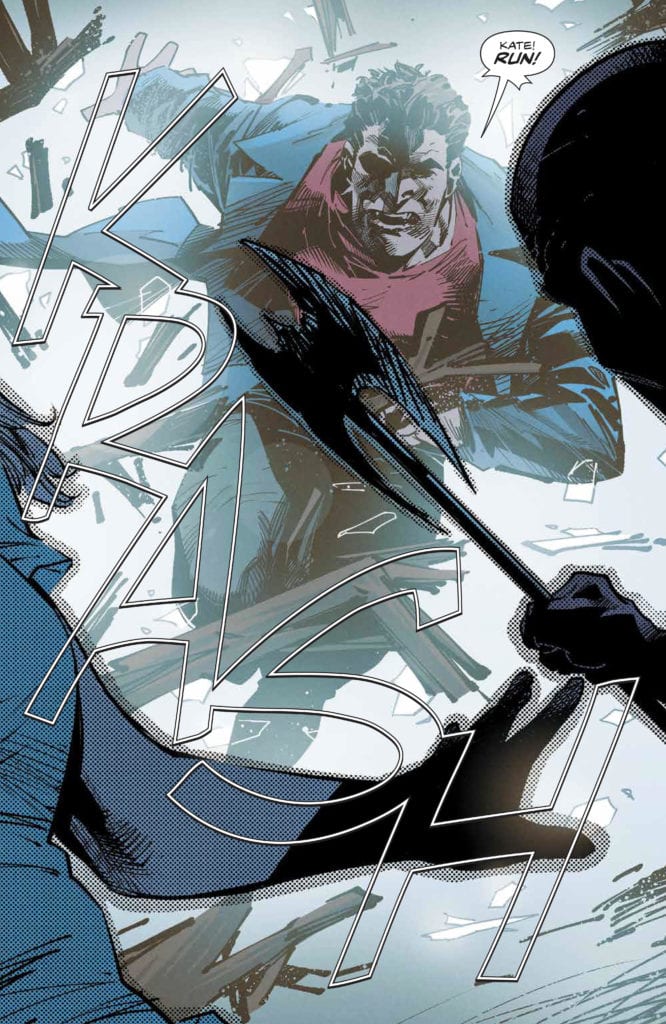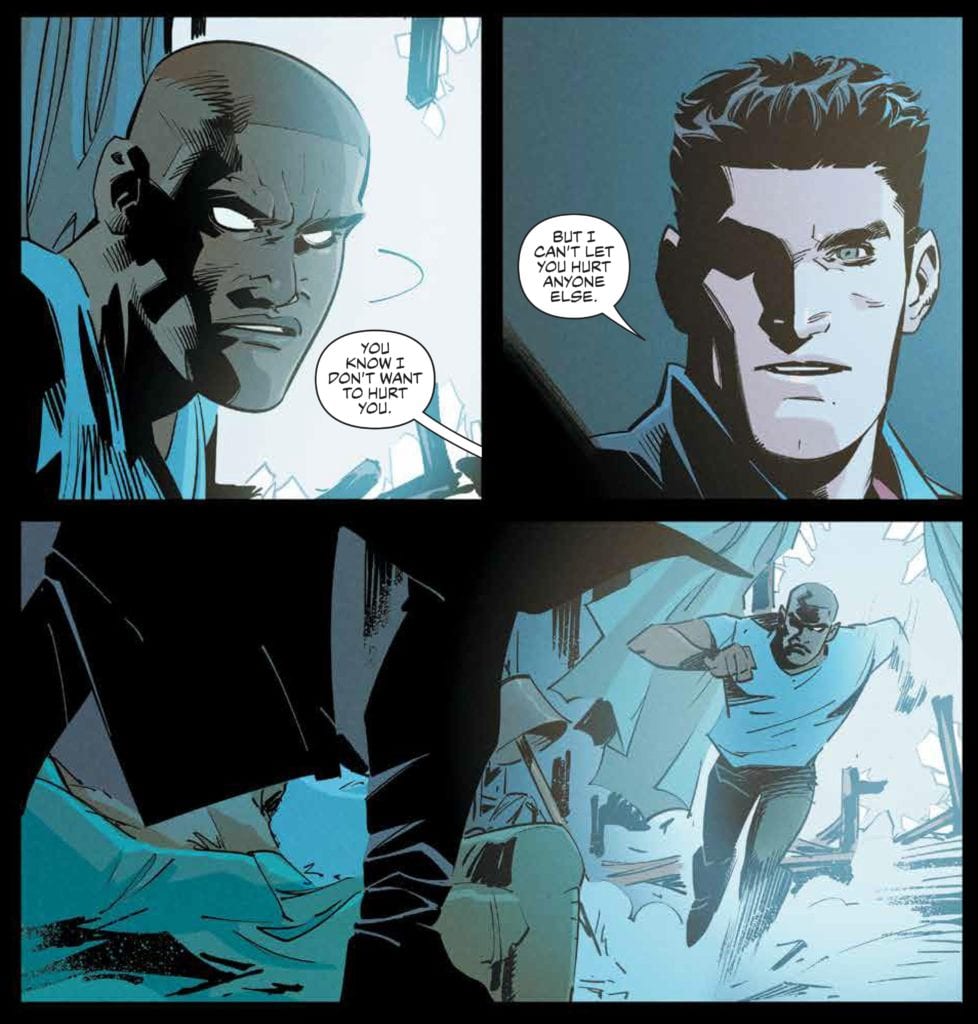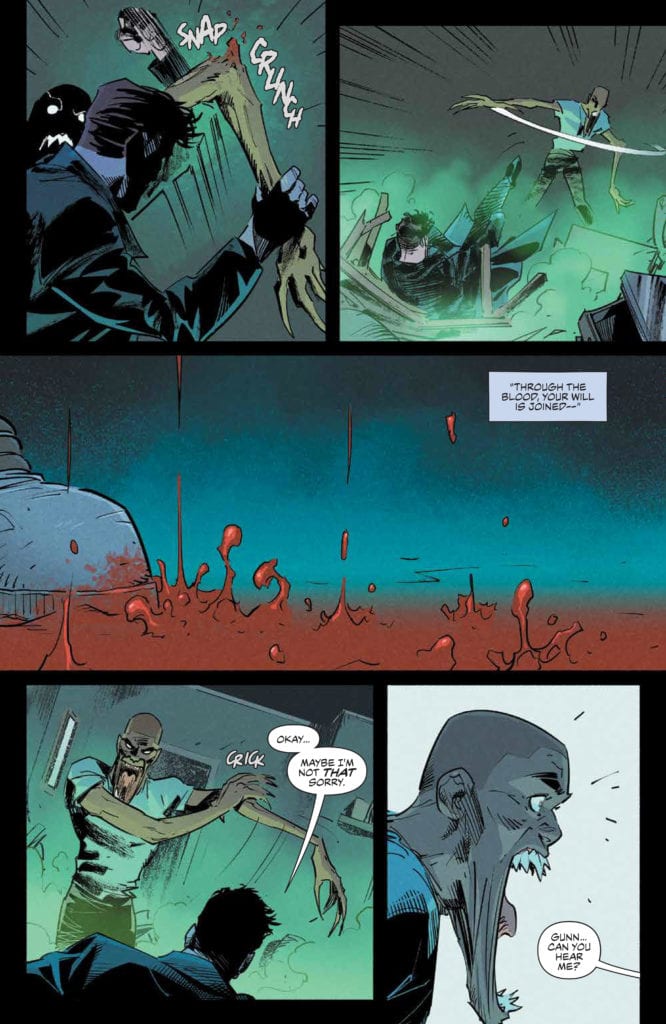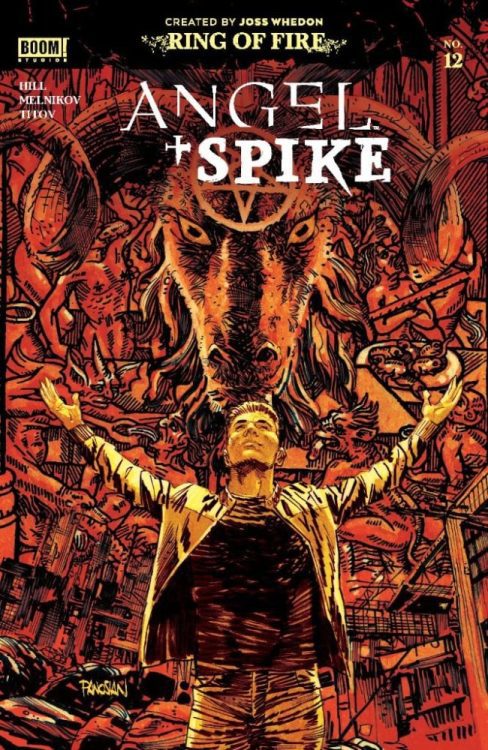Whether it’s dancing or fighting with demons, BOOM! Studios’ Angel series does both with style. As quickly as Bryan Edward Hill dispatches one demon, finishing the current arc, he sets up greater challenges for the cast to face. It is not always obvious what is happening in the background but one thing is for sure, Hill loves to surprise you.
Angel + Spike #12 sees the Vampire with a soul fight against friend and foe, who are trapped within one body. With the heckling of Spike, Angel must decide how long to hold back before taking one life to save many. Meanwhile, Fred is learning all about her powers and potential but what will be the cost? In the darkness surrounding the cast, is anyone ever a winner?

Fighting to the end
Demon possession is a popular trope within the Buffy-verse. Quite often extras get the body takeover treatment to cause trouble for the regular cast, however, Hill takes it a step further. Already in his run Hill has used the regular casts as hosts for supernatural creatures; it was his way of introducing Fred into the mix. The title character for the comic is basically a demon inhabiting a human body, so every time this trope appears the reader is forced to consider their opinion of Angel. Hill often draws parallels between the heroic character and the evil that he fights.
Within this issue Hill almost drowns the nuances of his story with violence and the magical transformation of Fred, overseen by Wolfram and Hart. However, he still manages to drop a number of hints towards the point he is trying to make, usually with the help of the sarcastic Spike.
This is an action packed issue composed of two separate fights that are linked by the possessing demon who exists on two plains. One is a fight of desperation with no control and only a small hope that the victim can be saved. The other is a truly magnificent transformation which wouldn’t be out of place in DC’s Demon Knights comic of old.
Although there is nothing groundbreaking in the development of this plot, it is the execution that makes it worth reading. There is no surprise in the ending of the Angel/Gunn fight however the violence that the vampire unleashes on the human is brutal. It is unexpected but, thanks to Hill’s script, completely believable. The sub-plot with Fred, however, is a different kettle of fish. At one point it reaches energetic highs akin to the best superhero comic only to bring the character, and the reader, crashing down into reality.

Action Illustrated
Whereas Hill crafts an intriguing story about good versus evil, it is Gleb Melnikov’s artwork that brings it to life. With color work by Roman Titov, the energy of the action sequences burns through the pages. In L.A. the characters have a gravity that holds them realistically in the images even while their physical forms mutate. In contrast, the ‘inbetween’ worlds where Fred finds herself, the laws of physics break down and the rendering of the scenes produce a believable, magical world.
The major theme of this issue is the contrast between the worlds that Angel and Wolfram and Hart inhabit. Their approaches to confrontation are vastly different and this is depicted in the way that Melnikov draws both worlds. There is a clear distinction between them while maintaining a single style of art. Part of this is the coloring with Titov using different focal colors for each part of the story. Angel’s fight is shrouded in a sickly green, highlighting the infection that has inhabited Gunn. Fred’s world has a streak of blood red throughout.
At no point in the comic does the audience get lost between the different plot threads, even though the chaos of the fights themselves can spin you around. Clever use of panel layouts make the transition from one thread to another easy to follow. Melnikov directs the action and controls the reader perfectly. His adeptness for drawing horror is only surpassed by his visual storytelling.
Each panel is owned by the image it contains but the composition is such that Ed Dukeshire can place the speech balloons in the most optimal positions. The lettering guides the reader safely across the page, weaving in and out of the fights. Each speech is important, the words giving the reader access to the characters, but at no point do they infringe upon the action. They blend together to create a convincing and satisfying single entity. Where Melnikov directs the cast physically, Dukeshire gives each character their voice.

Conclusion
Throughout Angel, Hill has played with the readers emotions and this issue is no different. Each month brings a roller-coaster of emotion as the creators dish out victories and loses. The straightforward horror aspect of the comic, with excessive violence and shock tactics, is played against a more disturbing aspect. The true horror is harder to fight and harder to see coming.
This is where Angel has excelled over the last year, building a world where every action has consequences unseen and trouble just around the corner. Just when you think you are winning you discover the opposite to be true. When you think you’ve finally defeated the evil, a new challenge rears its ugly head. And if that doesn’t sum up 2020, I’m not sure what does.


